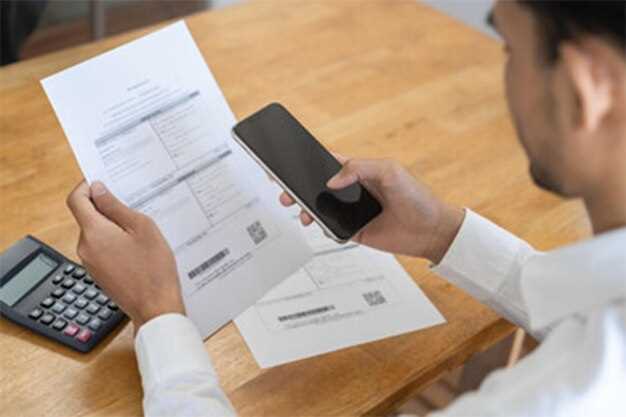
Ensuring the authenticity of restoration invoices and the parts used in any restoration project is crucial for both collectors and restorers alike. The integrity of a restoration not only depends on the skill of the craftsmen involved but also on the quality and legitimacy of the materials used. This guide aims to provide clear steps and best practices for verifying the authenticity of invoices and parts, helping you make informed decisions that preserve the value of your items.
When embarking on a restoration project, it is vital to establish trust with suppliers and verify the documentation provided. Systematic verification methods can help you identify potential red flags in invoices and ascertain the origins and condition of the parts used. This ensures that your investment remains protected and that the restoration work meets industry standards.
This guide will walk you through the essential aspects of verifying restoration invoices and parts, from understanding the significance of each element on an invoice to recognizing genuine parts versus counterfeit alternatives. By following these guidelines, you will enhance your confidence in the authenticity of your restoration endeavors, ensuring that the final results reflect the true spirit of the original item.
Assessing Invoice Authenticity: Key Indicators

Invoice authenticity is crucial for financial accuracy and operational integrity. To ensure that an invoice is genuine, consider the following key indicators:
Firstly, examine the invoice header. An authentic invoice typically includes the company logo, name, and contact details, which should match the information on the company’s official website or prior correspondence. Discrepancies in logos or contact details can raise red flags.
Secondly, look for a unique invoice number. Each invoice should have a distinctive identifier that follows a consistent numbering system. If the same number appears on multiple invoices or if the numbering seems random, this may indicate a counterfeited document.
Thirdly, verify the dates. An authentic invoice will have accurate transaction dates aligned with delivery or service dates. Any inconsistencies or delays in issuance may suggest potential fraud.
Fourthly, review the itemized charges. Genuine invoices will provide detailed descriptions of products or services rendered, along with corresponding prices. Incomplete descriptions or formats that are inconsistent with prior invoices may signal inauthenticity.
Fifthly, scrutinize payment terms. Authentic invoices typically include clear payment terms such as due dates and early payment discounts. Ambiguities or discrepancies in payment conditions should prompt further investigation.
Lastly, check for supporting documentation. Authentic invoices often come accompanied by packing slips or receipts that validate the transaction. A lack of supporting documents should initiate additional verification steps.
By closely assessing these indicators of authenticity, organizations can safeguard against inaccurate billing and potential fraud, ensuring financial reliability and trust in business operations.
Documenting Parts Used: Best Practices for Transparency
In the realm of restoration and maintenance, ensuring the authenticity of parts used is crucial for building trust between service providers and clients. Proper documentation not only enhances transparency but also facilitates accountability throughout the restoration process.
To maintain clear records, begin by establishing a systematic approach to documenting parts. Each entry should include essential details such as part numbers, descriptions, purchased dates, and supplier information. It’s advisable to use standardized forms or digital systems that can consistently format this data.
Incorporating photographs of the parts before installation can serve as additional proof of authenticity. Images should show the part numbers and any identifying marks. This visual documentation can be invaluable during disputes or for warranty purposes.
Another best practice is to retain all invoices from suppliers, which confirm the purchase of each part. These invoices should be organized chronologically and attached to the corresponding service records. This creates a robust trail that can be followed for verification.
Engaging in regular audits of your documentation practices can also improve accuracy. Schedule periodic reviews to ensure that records are complete, up to date, and reflective of the actual components used in restoration projects. This proactive measure reinforces both your credibility and that of the parts supplied.
Lastly, consider training team members on the importance of proper documentation. Emphasizing its role in guaranteeing authenticity will foster a culture of diligence and meticulousness, ensuring that every part’s history is traceable.
Common Pitfalls in Restoration Verification and How to Avoid Them

Restoration verification plays a pivotal role in ensuring the authenticity of the parts used in the repair process. Nonetheless, there are several common pitfalls that can undermine this verification. Recognizing these pitfalls is crucial for maintaining quality and trust in restoration projects.
One prevalent mistake is the reliance on non-validated sources for parts procurement. Often, restorers may opt for the cheapest option without verifying the supplier’s credibility. To avoid this, always source parts from reputable dealers and ensure they provide documentation confirming the authenticity of each component.
Another issue arises when restorers fail to keep detailed records of parts used and their respective invoices. Lack of documentation can lead to discrepancies when auditing or when clients request proof of authenticity. Implementing a robust system for tracking invoices and parts will safeguard against this problem.
In some cases, misinformation regarding historical accuracy of parts may lead restorers to use incorrect or non-authentic components. It is essential to research and verify the specifications and provenance of parts before integrating them into a restoration project. Engaging with specialists or referencing trusted restoration guidelines can aid in this process.
Additionally, overlooking the importance of warranties and guarantees can be detrimental. Always ensure that the parts used come with a valid warranty that attests to their quality and authenticity. This not only enhances credibility but also provides a safeguard in case of defects.
Lastly, ineffective communication among team members can result in misunderstandings regarding part specifications and invoices. Establishing clear communication channels and regular team meetings can help ensure that everyone is on the same page, reducing the risk of errors in the verification process.
Avoiding these pitfalls will create a more reliable restoration process that upholds the authenticity of the work and builds trust with clients. Consistent diligence in verification practices will lead to higher standards in restoration projects.




